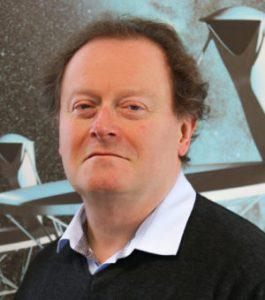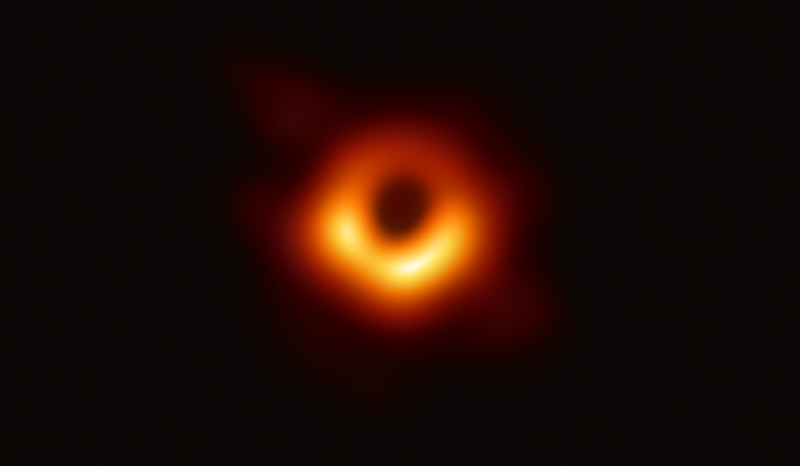The SKA link to the Event Horizon Telescope black hole image

SKA System Scientist Dr. Robert Laing was part of a global team of more than 200 researchers involved in the result, and he co-authored two of the six papers published in The Astrophysical Journal Letters (the summary and instrumentation papers).
The announcement which was broadcast around the world was also shown at the SKA Science Conference taking place at the same time in Cheshire. 300 astronomers from 20 countries, including some who were involved in the EHT results, gathered to watch the live announcement.
“This is the first image of the shadow of the event horizon of a black hole around the nucleus of a galaxy called Messier 87. It’s confirmation that what we believed about black holes is really true,” Dr. Laing said on the sidelines of the meeting.
“We’ve known for a long time that there are very big masses in very small volumes in objects in the Universe but now I think we have real confirmation that general relativity is correct in predicting the properties of black holes in the cosmos.”
The EHT observations were made with eight radio telescopes spread around the globe, using a technique called Very Long Baseline Interferometry (VLBI). By combining the signals from telescopes observing the same object at the same time, but from different locations, the effect is like observing with a radio telescope the size of the Earth. VLBI is a technique that the SKA will contribute to in the future.
“The Event Horizon Telescope goes in very close to the nucleus of an active galaxy,” Dr Laing explained. “SKA VLBI will go a little bit further out but in much more detail and sensitivity so they give you complementary pictures of the same objects.”
Dr. Laing previously worked for the European Southern Observatory on the ALMA telescope project, which was one of the key facilities in the EHT observations. Read more on the Event Horizon Telescope website.

Listen to Dr. Laing and SKA Organisation VLBI expert Cristina Garcia Miro discuss the result, and the potential synergies between the SKA and EHT, in the video below.




